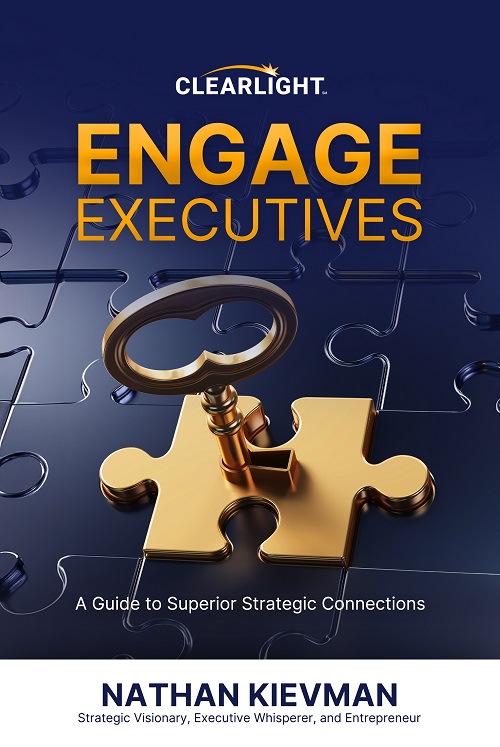What are the Top Priorities Executives and Investors Look for When Evaluating a Pitch from a Startup?
It’s important to start with the most crucial factor executives and investors consider when evaluating a pitch: the people. They want to understand the background, experience, and trustworthiness of who they’re speaking with. If they don’t know the individual personally, they’ll assess their credibility based on their experience and track record. This is why it’s vital for inexperienced founders, especially in startups selling services or solutions, to build a strong advisory board and executive team. While it’s acceptable if it’s their first business, they must mitigate that lack of experience with capable team members and advisors.
You have to remember that all business is relationships first. People work with those they trust. Results and past work is the first and most powerful way to demonstrate your ability to be trusted with their money.
I’ve seen tens of thousands of sales calls over the years and this by far outweighs everything else. Executives will work with somebody on a gut feeling if they trust them or if they were referred from a trusted source.
It’s rare for any level of enterprise or larger deal, for it not to get done without trust and credibility.
Companies selling their services or solutions need to be able to articulate this in a powerful way on their website and in their investor decks.
What we’re getting into is a concept called the “Five Psychological Triggers.” These are written rules that executives and investors all run by. They essentially function as the operating system in the minds of investors and executives.
Trust and credibility are the first two. The next three are time, money, and risk.
This is primarily for B2B organizations, but it applies to all startups when you’re talking about raising capital from investors. How do you speak their language? You speak to them in the way that your business and its performance will address their concerns around time and risk only after you’ve established your trustworthiness and credibility.
If you can do this powerfully, you will have great success, interacting with executives and investors!
How can Entrepreneurs Frame their Ideas as Solutions that Directly Address the Company’s Biggest Pain Points?
I have so much to say about this topic. I’m gonna keep it to one main area.
The area I want to address here is truly understanding your client’s biggest pain. I don’t believe that most companies really understand this.
I believe the founders think they have the real pain, but they haven’t done the market research to validate it. If they have, then congratulations, you’re ahead of the curve!
I highly recommend talking to 10 to 20 of your ideal client buyers that you believe are the right people to find out what they think about your product. What they like, what they don’t like, what they would advise, what they are worried about and so much more. You’d be amazed at how easy it is to get these individuals to do a complementary review of your new product or offering.
This work does a couple of really powerful things. The first and obvious one is it gives you great market insight on the language to use with your end users. As long as you’re authentic about the purpose, you’ll generally benefit by gaining a couple of clients this way as well additionally, you’ll get several referrals from this network as long as you don’t come into this research with those intentions.
If you do this research, right, you will identify your clients’ biggest pain points. The language they use that you will need to use and how to position your product or offering in the most powerful way.
I think it’s important here to identify the difference between executive and mid-level managers or directors. Depending on who your buyer is, will determine what kind of language you’re going to use and what you’re gonna hear from your buyer market. This is why doing this research is the most critical aspect of any market or launch. Because you can never speak their language as well as they can.
You’ll find the executive will speak in terms of time, money and risk, very differently than directors or managers will. Directors and managers speak in terms of time very differently, typically talking about how much it will take of their time, not as much about how much time it will save the company. They will talk about money in terms of their budget, not in terms of return on investment. They will talk about risk in terms of how risky this is to their job and not how risky it is for the company’s positive return.
In reverse, executives and founders will talk about time, money and risk in a very different way as well.
Executives are still taking into consideration what you’re offering, and what the board will say about it. Whereas a founder will typically think of this as his or her money and how this will impact the business. Just understand who you’re speaking to and conduct the interviews with the right buyer so you can understand the language that you need to use to be the most powerful you can be when presenting to future prospects or to investors for capital raising.
What Common Mistakes do Entrepreneurs make When Pitching to Executives, and How can They be Avoided?
The most common mistake entrepreneurs make when pitching to executives is getting baited into what the executive wants to happen.
A very common experience is you’ll get on the phone with an executive and they’ll act very busy and say hey can you just tell me about what you do real quick and what the price is. They’re very quick to try and drive the meeting and they’re testing you when they do this.
Executives are very good at making decisions. That’s why they’re executives. To make those good decisions they need informed insights that will lead them to options so that they can make those good decisions. They become highly frustrated when forced to make decisions without informed insights.
It’s your job when selling to an executive to understand this executive buying arc.
- Informed insights
- Options for consideration
- Quality decision-making
All executives follow this strategy.
So when you’re selling, the biggest mistake that entrepreneurs make is they show up and throw up!
They talk and talk and talk and talk. They’re literally shooting in a barrel and have no idea what they’re going to hit.
A lot of questions – that is the strategy. Be curious, follow up on the questions that you’re asking, and the answers that they give. Listen, listen listen listen! Then ask questions, ask more questions then ask more questions!
You need to get in the mind of a consultant. you need to put yourself in their shoes and ask questions like you care about their outcomes and you’re trying to find out if they have a gap between where they’re at today and where they want to be and if your solution, product, or offering can help them fill that gap. If it can then you advise accordingly! if it can’t, you say it can’t and you’re honest and authentic about it.
So many entrepreneurs just want to make the sale for the sake of making a sale. You’re in the solutions game you’re in the game of adding value. When they feel this, they will trust you, and then you will earn their business.
How can a Startup Demonstrate Long-Term Value and Strategic Partnership Potential, beyond just Short-Term Gains?
As mentioned in the prior section, the executive buying arc is the key here.
You need to find out how you can add value, how you can give to the market something of great value that gets people into your circle of influence and allows them to feel like you really invested in them and allows them to get to experience your quality of offering.
Companies use various offers for this such as complementary market analysis or a free consultation, or a complementary group training session or workshop, or a business case analysis, or a strategic assessment. You see this with the SaaS organizations with the free offering or free trial. In the service business, you have to work hard to offer something of real value which doesn’t always take a lot of your time.
This cannot be a gimmick, or it will not work. If you do this well you will be able to create great value for your buyer market, gain a lot of referrals and be an easy decision for strategic partners that want to team up with you.
How should Entrepreneurs Handle Feedback or Pushback from Executives during a Pitch?
Like we mentioned earlier, any conversation with an executive should be filled with questions. When you get pushback, it’s usually because of a lack of understanding or a belief that they understand when they really don’t.
The absolute best thing here to do is to continue asking questions such as:
- What makes you believe that?
- Or could you elaborate on what you’re talking about? I’m a little confused and maybe we’ve misunderstood each other.
- Can I ask you a question to clarify a little bit?
- Thank you for sharing that, would it be OK if we dive a little deeper into that topic?
These are all really good counter questions to a concern or an objection that might pop up. It’s also super important to capture all those objections and ask a lot of questions to get the unset objections out in the open.
As you develop your sales process, you will want to continue to capture all the objections and all the unset objections which are causing people to say no to your solutions so that you can revert back with your product team, your marketing team and your sales team to optimize and address those objections.
My favorite way to develop the sales conversation is to enable it to be a co-created journey. Of course, you have to guide them with somewhat of a framework to solve the solution that they’re trying to solve, however, oftentimes our solution is getting them to one of the two primary things all executives want. They are looking to make money or save money!
However, you ultimately articulate your solution. It’s going to do one of those two things. The faster you understand the faster you’ll be able to speak executive and the faster you’ll be able to create proposals and offerings that everybody will benefit from.
Remember to listen, ask a lot of questions, find the gap, provide confidence that you can solve the gap, and offer to co-create a solution together that will work for them and you!
Author: Nathan Kievman, CEO of CLEARLIGHT, and is author of the Book “Engage Executives”
Find a Home-Based Business to Start-Up >>> Hundreds of Business Listings.


















































